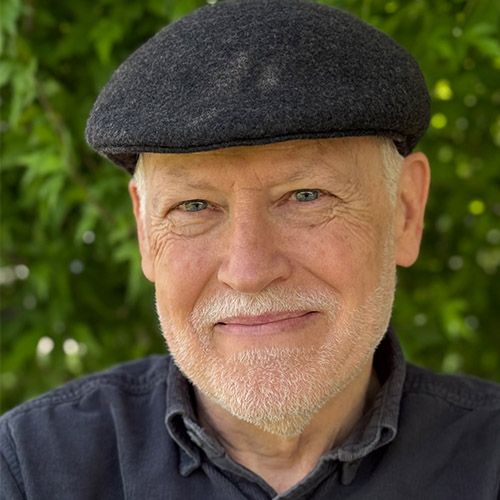Many of the recent advancements in audio production for houses of worship have been driven by the pandemic. During lockdown, churches were forced to bring their services online. While some were doing this prior to COVID-19, many found themselves scrambling to upgrade their systems to support productions that would engage worshippers who were dialing in remotely from their homes.
Initially, the focus was on making significant improvements to production lighting, video, and signal distribution technology, noted Michael Garrison, president and owner of Michael Garrison Associates (MGA), a design and integration firm that serves faith-based organizations. However, as time went by, houses of worship turned their attention to audio quality.
“Ideally, this is accomplished by a dedicated mix to engage the remote audience as participants with the live, in-person community, not just as spectators,” he explained. To achieve this, engineers include a blend of ambient elements in the worship space, such as laughter and clapping, in addition to the spoken word, musical performances, and congregational singing.
From a manufacturer’s perspective, there is a shift toward delivering an entire audio ecosystem that enables integrators and their customers to benefit from the ability to source technology—such as loudspeakers, amplification, and calibration software—from the same company. Josh Maichele, applications project director for house of worship at L-Acoustics, argued that this results in higher quality systems.
“If you buy a BMW car, you don’t expect there to be a Kia engine in it and wheels from Ford, and BMW has no control over the end result,” Maichele illustrated. “The [AV] manufacturers that are providing premium audio experiences for churches are the ones who are adopting this full ecosystem approach to everything.”
“If you want a great-sounding broadcast mix, you have to have a great-sounding mix in the room first.”
Jake Hartsfield, Allen and Heath USA
Jake Hartsfield, live sound and touring manager at Allen and Heath USA, observed that loudspeaker quality continues to improve, which, in turn, results in better speech intelligibility in the house of worship environment. “There are a lot of high-end systems, but there are more and more mid-range line array and point source audio systems that just sound phenomenal,” he said. “It sounds like you’re using studio monitors in a room.”
When a worship facility has good acoustic treatment combined with a quality sound system, Hartsfield said there is no reason for the spoken word—or vocals in a musical performance—to be unintelligible. “I don’t tune systems differently for spoken word or music," he added, "because music is heavily vocal-centric and you need to have intelligibility in the vocals.”
FOH in HOW
When it comes to selecting audio consoles, Hartsfield advises that churches and their integration partners who are discussing channel count requirements build in a margin for growth. He conceded that this can be difficult for smaller churches with no current plans to add new band members and vocalists to their worship teams.
However, Christmas and Easter productions, regardless of the church’s size, usually demand more channel count. While renting consoles that can support these events may make financial sense, that can start getting expensive during rehearsal periods that last a month or longer. Plus, Hartsfield said when operators are already familiar with the console they’ll be using for Christmas and Easter productions, it removes a layer of stress.
“My recommendation would always be [for the console to] support any events that you’re going to have at your facility,” he said. “Ideally, if you have a system that can be modular, then you’re not changing the console out. You’re just adding I/O if you need to add inputs.”
Hartsfield also counsels simplicity when it comes to broadcast mixes, which he said people tend to overcomplicate. While large churches may have separate broadcast systems operated by a dedicated engineer, he doesn’t view this as necessary in small or medium-sized houses of worship.



“There’s no reason you can’t use your front of house mix for your broadcast and just add in audience mics,” he suggested. “If it sounds great in headphones, it’s going to sound great on someone else’s headphones, and that extends to people listening in cars and on home theater systems.”
That said, Hartsfield urges churches to prioritize the house mix. “If you want a great-sounding broadcast mix, you have to have a great-sounding mix in the room first,” he said. “You’re really not doing your congregation a service if you have a good broadcast mix, but it sounds terrible in the room. You really want to serve [the people that are there] first.”
Lance Eddleman, application engineer at DiGiCo, noted that one challenge that for engineers who grew up in the analog world has been adapting to AV over IP workflows. He said there is a need for training and encourages church techs to earn their Dante certification (at least) to gain a better understanding of networking.
Moving Toward Immersive
In the worship environment, immersive audio offers the opportunity for churches to build a stronger connection between their congregations and what is happening up on stage. “What we’re doing is breaking down a barrier to allow for a more open level of communication between the worship pastors and the lead pastor and the people who are sitting in the audience,” Maichele said.
He added that L-Acoustics’ latest upgrade to its L-ISA Immersive spatial audio solution extends this connection to remote worshippers, thanks to sound spaces that enable operators to more accurately represent what’s happening on site, in the physical environment.
Alan Johnson, business development lead for house of worship at L-Acoustics, said this stronger connection turns worshippers into active participants, not just a passive audience. And churches want members of their congregations to be engaged.
"As Americans—or as humans in general—we’re used to being entertained, we’re used to being spectators," he said. “[With immersive audio] they’re less of a spectator and more of a participant.” When houses of worship can extend immersive audio to those viewing their live streams, Johnson said it helps bridge the gap between in-person and remote worshippers.


At Faith Community Church (FCC) in Tucson, AZ, Garrison’s firm integrated an immersive audio system comprised of EAW’s line of ADAPTive loudspeakers, including 19 AC6 column loudspeakers (nine positioned in the front of the worship center and 10 surround sound cabinets). Three Otto subwoofers, as well as 13 MKD526 2-way full-range dual-woofer loudspeakers for stage-lip front fills, round out the system. MGA collaborated with Flux:: to incorporate its SPAT Revolution immersive control software to create a mix that would deliver sound coverage across the space.
According to Garrison, deploying a solid live spatial audio system requires high-quality loudspeakers, uniform long-throw dispersion for coverage across the room (either front-to-back or side-to-side), uniform wide-throw dispersion (to optimize overlap between array points over seating), and the best possible coherency so sound quality is consistent at all seats. Unfortunately, in many cases, fulfilling these requirements isn’t possible with traditional point-source or line array systems designed for assembly spaces.
As churches (along with other performance venues) express increased interest in deploying immersive audio capabilities in their facilities, Garrison believes that manufacturers will start rolling out solutions that address this. "The good news is that there are a few loudspeaker products available that meet these needs," he added.
Get even more insights: Download SCN's Integration Guide to House of Worship.
Designing for Volunteer Operators
Because churches rely heavily on volunteers to operate their AV production systems, the technology needs to be easy to use. Tech directors and their full-time colleagues are often spread thin, which means they don’t have a lot of time to train volunteer team members on these systems. For this reason, Josh Maichele from L-Acoustics encourages integrators and houses of worship to determine whether the solutions they’re considering follow the three-click rule, wherein operators only need to click through three choices on the user interface to find what they’re looking for.
Allen & Heath USA’s Jake Hartsfield echoed the need to select tools that are easy for training volunteers. While church tech directors have the responsibility of being good stewards of the funds they’re given, it’s also important to consider who will be operating this equipment. “From an operator standpoint, it’s about reliability and ease of use,” he said. “And does it sound good?”
